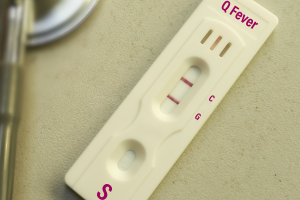
The Centres for Disease Control and Prevention (CDC) has issued a warning about the increasing prevalence of New Delhi metallo-beta-lactamase-producing carbapenem-resistant Enterobacterales (NDM-CRE), a type of superbug resistant to some of the most potent antibiotics.
Previously mostly associated with healthcare systems in other countries, these infections are now spreading across hospitals, long-term care facilities, and emergency departments in the United States. Federal data show that overall CRE infections increased between 2019 and 2023, with NDM enzyme–related infections rising at an even faster rate. Cities like New York have seen case numbers triple, rising from dozens to hundreds within a few years.
Carbapenems are considered among the last-resort antibiotics, and the NDM enzyme renders them ineffective. Patients may develop bloodstream infections, ventilator-associated pneumonia, urinary tract infections, and central nervous system infections. Delays in diagnosis and treatment increase mortality, particularly when organisms possess multi-resistant mechanisms.
The problem is not only biological but systemic. Many hospitals lack sufficient personnel to implement isolation and cleaning measures regularly. Laboratories still fail to test all resistant isolates for the specific mechanism, meaning crucial information regarding whether resistance is fueled by NDM, KPC, or other enzymes is usually missing. The CDC’s Antibiotic Resistance Lab Network provides support, but uptake remains inconsistent. Without rapid testing, infections can spread more quickly than containment efforts can manage.
“Infections can spread faster than they can be controlled without rapid testing. Although treatment options exist, they are costly and require specialised expertise. Some regimens utilise combinations, such as aztreonam with beta-lactamase inhibitors, while others rely on newer agents, like cefiderocol. These treatments require careful monitoring, and the Infectious Diseases Society of America recommends mechanism-specific guidance rather than improvising at the bedside.
In comparison to previous years, when most cases in the U.S. were linked to international travel, epidemiologists currently observe widespread domestic transmission within the country. Mobile DNA frequently contains the NDM genes, which can transfer easily between species, such as E. coli and Klebsiella, in hospitals, dialysis units, and nursing homes. This shift makes universal mechanism testing essential for any Enterobacterales infection resistant to carbapenems. Surveillance remains uneven, as not all states report complete information, leaving gaps that allow outbreaks to continue undetected. The risk of delayed lab results during patient transfers further increases the risk of spread, highlighting the importance of coordinated regional data sharing and communication.
The control of the infection is based on high hygienic standards, including the use of gowns, gloves, the deep cleaning of rooms, decontamination of equipment, and, occasionally, cohorting of patients. Environmental reservoirs, such as sink drains and splash zones, also require attention. Antimicrobial stewardship is crucial to optimise antibiotic use and prevent further resistance. While these measures are costly, untreated resistance leads to increased hospitalisation, readmission, and expensive therapies. Patients and families should remain vigilant by inquiring about carbapenemase testing, adhering to contact precautions, and obtaining cultures when infections persist.
Despite the challenges, there is reason for optimism. States and hospitals that have invested in regional collaboration, timely diagnostics, and robust infection control have reported notable improvements. According to the CDC, preventing further spread will require reinforcing daily infection-control measures, expanding laboratory capacity, and raising public awareness that antimicrobial resistance is a critical emergency.
References: The Eastern Herald. CDC says US hospitals are losing the fight against an NDM-CRE superbug. Published September 25, 2025. Accessed September 25, 2025. CDC says US hospitals are losing the fight against an NDM-CRE superbug.












